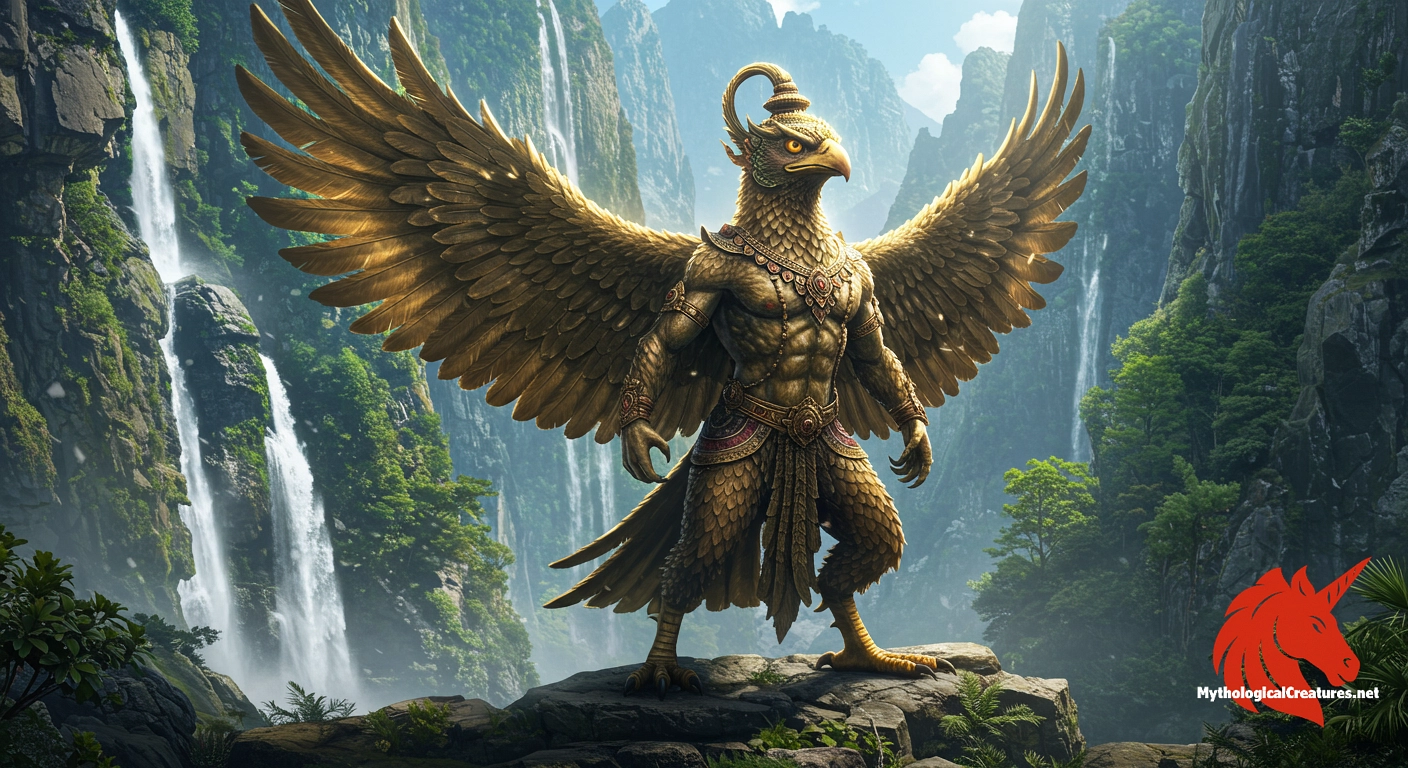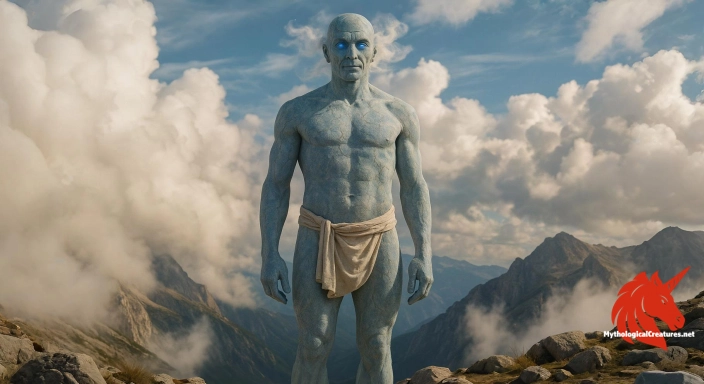Garuda: Garuda is a majestic divine bird from Hindu mythology, renowned as the vahana (mount) of Vishnu.

Garuda
Garuda - Symbolises speed, martial prowess and remains an enduring cultural icon in South and Southeast Asia
Origins & First Encounters
Garuda occupies a notable position in Hindu mythology, revered both as a divine being and as the mount of Vishnu. He emerges from the ancient lineage of Kashyapa and Vinata, a heritage that intertwines celestial wisdom and martial vigour. His earliest appearances in the Vedas and Puranas set the foundation for a character who bridges the gap between the mortal world and the divine. The narratives surrounding him exhibit a rare blend of human intellect with majestic avian prowess, making his image both dynamic and timeless. Familial ties that extend to figures such as Aruna further enrich his mythic persona, adding layers of complexity to his relationships within the cosmic order. Over centuries, Garuda has transcended the boundaries of Hindu tradition, also casting his influence over Buddhist and Jain narratives. This enduring figure symbolises the triumph over chaos, particularly through his legendary battles against serpentine foes. His stories have been woven into the fabric of cultural rituals, art, and literature, reflecting universal themes of protection and swift retribution. The continuing reverence for Garuda underlines a legacy that unites ancient beliefs with contemporary cultural identities.
Source Texts & Tale Variants
The literary tapestry of Garuda’s legend is as varied as it is ancient, with early mentions found in seminal texts such as the Vedas and Puranas. Diverse scriptures across Hindu tradition detail his role as both a divine warrior and the loyal vahana of Vishnu. Rich narrative layers also appear in later compilations, where dramatic episodes highlight his heroic confrontations with malevolent forces. Buddhist texts, adapting elements of his myth, present him as an embodiment of wisdom coupled with martial strength. Jain accounts further expand his mythos by incorporating distinctive regional motifs and ethical allegories. Varied recensions of his tale reflect shifts in cultural emphasis, sometimes portraying him in a predominantly zoomorphic form and at other times blending human and avian traits. Episodes of epic duels against serpents appear with nuanced differences, underscoring the fluidity of oral and written traditions. Local folklore embellishes the primary sources with additional narrative threads, ensuring that his story continues to be retold with fresh vitality. The rich diversity of these sources reminds us of the multifaceted nature of myth, where each version contributes uniquely to Garuda’s enduring legend. These classical and evolving sources together form a complex mosaic that has captivated devotees and scholars alike through the ages.
Form & Powers
Garuda’s physical form is a striking fusion of majestic avian grace and formidable human attributes. His broad, expansive wings are rendered with intricate feather patterns that gleam in hues of gold and crimson, symbolising divine radiance. The depiction of his eyes, often described as luminous and piercing, conveys an unwavering vigilance and an intense spirit of protection. Muscular contours and a robust build are frequently accentuated by ornate armour, suggesting both his impervious nature and heroic strength. In many portrayals, a human-like torso melds seamlessly with powerful, bird-like legs equipped with razor-sharp talons, epitomising agility and combat-readiness. A curved, formidable beak serves as a vivid metaphor for determination and authority. Certain artistic traditions enhance his image with subtle reptilian scales, lending an exotic allure to his celebrated form. Variations in size are common, with some depictions presenting him as an immense, sky-dominating figure, while others opt for a more intimate and symbolic representation. Adornments such as jewel-encrusted bands further accentuate his regal bearing, creating a visual narrative that is as rich in detail as it is in symbolism. This intricate array of features ensures that Garuda stands as one of the most vividly and enduringly depicted beings in ancient iconography.
Regional Faces
Across diverse geographical landscapes, the depiction of Garuda has evolved to reflect local cultural and artistic sensibilities. In India, he is primarily celebrated as the mighty steed of Vishnu, embodying the spiritual core of devotional practices and epic narratives. In contrast, Southeast Asian traditions, particularly in Thailand and Indonesia, have elevated his image into that of a regal emblem featured on national insignia and state symbols. Artistic renditions in these regions often adopt more streamlined and abstract forms, accentuating fluid lines and dynamic postures. Buddhist iconography in countries such as Sri Lanka and Cambodia weaves in subtler symbolic attributes that conjoin themes of peace, protection, and cosmic harmony. Local mythologies frequently interlace indigenous elements with his canonical features, giving rise to hybridised portrayals that carry unique cultural resonances. Some regional versions spotlight his role as both a celestial guardian and a literal bridge between earthly and divine realms. While one tradition may underscore his epic struggles with serpents, another might highlight his significance in the orchestration of cosmic order. These regional adaptations underscore a flexible mythic symbol that preserves its core identity while adapting to diverse local narratives. In this way, Garuda continues to inspire a rich tapestry of interpretations that celebrate both universality and cultural distinctiveness.
Cultural Parallels
Comparative mythology reveals that Garuda shares themes and symbolic functions with several divine avian figures from other cultural traditions. His ability to traverse the heavens and the earth is reminiscent of the eagle associated with Zeus in Greek lore, both embodiments of celestial power and vigilance. The Persian Simurgh, with its storied wisdom and majestic presence, offers another intriguing parallel in its role as a cosmic intermediary. Similar to the phoenix, which symbolises cyclic regeneration in many cultures, Garuda also represents the perpetual struggle between order and chaos. These common motifs underline a universal human fascination with bird-like entities that merge divine attributes with natural forces. The recurring narrative of battles against serpentine adversaries, found in both Eastern and Western myths, emphasises the symbolic clash between light and darkness. Garuda’s hybrid form, merging human intellect with avian might, aligns him with other mythological figures that exist on the threshold between earthly and celestial realms. Modern cultural narratives—ranging from literature to film—often draw upon these interwoven themes to create fresh interpretations that resonate with a global audience. In synthesising these diverse cultural perspectives, Garuda emerges as a distinctive yet familiar figure, embodying universal ideals of power, resilience, and sacred protection.
Legacy & Modern Evolution
Over the centuries, the myth of Garuda has undergone significant evolution, shifting from ancient scriptural portrayals to a dynamic symbol of modern identity. Early Vedic and Puranic texts presented him primarily as a divine warrior and loyal mount of Vishnu, a portrayal rooted in the cosmic battle between order and chaos. As artistic traditions developed, his image became a fixture in temple carvings and classical paintings, immortalising his heroic feats for future generations. In more recent times, his fierce iconography has been adopted on national and military insignia in countries such as Indonesia, Thailand, and India, thus reinforcing his status as a symbol of strength and vigilance. Contemporary reinterpretations have further enriched his character, imbuing him with attributes of resilience and leadership that resonate in modern contexts. Featured in literature, visual arts, and popular media, Garuda continues to serve as an inspirational emblem that bridges ancient myth with contemporary values. His evolving legacy demonstrates how timeless symbols can be reimagined to address the societal and cultural challenges of various eras. By adapting his storied past to modern aspirations, the myth of Garuda underscores the enduring power of narrative in shaping cultural identity. This seamless blend of tradition and modernity ensures that Garuda remains a potent emblem of divine might and worldly triumph.
Interesting Fact
Garuda's emblem is so revered that it has been adopted as a national symbol by countries like India, Indonesia and Thailand, reflecting his enduring influence across diverse cultures.
Quick Creature Info
Associations:
Our Mythic Legendary Rating:

Also Sometimes Known As:
Habitat:
Supernatural Powers:
Physical Attributes:
Abilities:
Behavior:
Lore:
References
Discover Another Mythical Legend You May Not Have Heard Of?
Uncover the mysteries of ancient folklore and expand your knowledge of legendary beings from cultures around the world.
Dare to Meet the Asman....
Mythical Disclaimer: The images and data on this site are derived from various historical and literary sources, but we have found that many myths often have multiple versions and interpretations across references, sometimes contradictory. As a result, these creature depictions are artistic interpretations—imaginative blends of folklore, legend, and a dash of AI guesswork. Because creature descriptions vary widely, our illustrations and accompanying information represent our best effort to honor mythology while bridging creative gaps. Enjoy these interpretations—just remember, we've done our best to respect the stories and validate available data, but in the realm of mythology, details often shift, imagination leads the way, and nothing is ever set in stone!
Curated by the Mythological Creatures Team (rev. May 2025)
